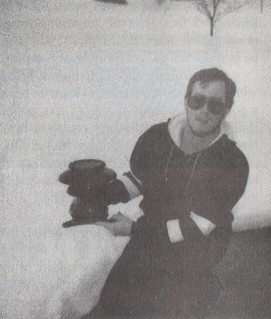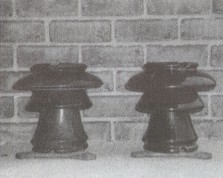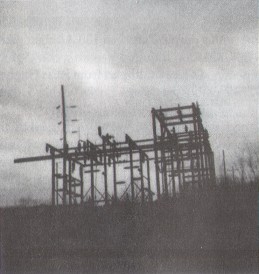Coal Town In Pennsylvania Nets Great Porcelain
by David Adams
Reprinted from "Crown Jewels of the Wire", July 1991, page 28
In September 1990 my friend Ron Rath and I took a trip to the coal town area
of upper Pennsylvania. We decided to leave early on Saturday morning to beat the
traffic. The morning was perfect for our 2-1/2 hour drive north.
Our first stop
was at a substation. We looked around and found some nice M-4612' s in
beautiful orange brown glazes in mint condition. There were about six mint
M-4750's in a mottled brown glaze. After looking for the owner of the building
and not being able to locate him, we went to an antique shop on the hill behind
the substation. We asked if they knew who owned the substation, but they were of
no assistance.
In the shop, however, we found some common but nice early crude
white seam over signals (U-260s and U-270s) along with some common glass. All of
these insulators were mixed in with thousands of bottles in a room hardly any
larger than a trolley car. As we continued our search in the town, we
investigated the bases of some of the large power lines, but found nothing but
recently manufactured suspension types.

David Adams holding a cobalt blue
glaze M-3120
We continued to our next coal town, checking all the rail lines along the
way. We found nothing but common glass on the lines that had been used for
target practice. Upon reaching the town, we found an active coal mine. These are
always very interesting to see in progress. Across the road from the mine was
what looked to be the old workings of the active mine. There was a giant four
story tipple, with a shaft leading into the ground. As we walked toward the
tipple, we noticed an old stucco building with two large lifts in it, with a
plank covered hole in front of it. We didn't get too close, but threw some large
rock down the hole. They fell a long distance and hit water at the bottom.
Needless to say, we headed out of there in a hurry, knowing how unstable coal mines can be.

The cobalt M-3120 (a Pittsburg product)
and the mottled brown Locke M-3120
At our next
stop, we noticed a substation high up on a hill overlooking the valley. We
climbed the hill to get to it. Upon reaching the station we noted that it was
dead and wireless. We found some nice multiparts on the ground encased in a
square wooden device. We did not notice at first that they were the M-3120s. We
finally pried them lose form their casing and carried them down the hill into
our van. Ron found the M-3120 Locke in a mottled brown glaze and I got the
M-3120 dated Pittsburg in blue glaze.
Down in the valley below was a porcelain
collector's dream of dreams...a mine and its substation and powerhouse with
every kind of style and color you could ever want. There were grays, whites,
yellow, red-browns, orange, orange-browns, tans, etc. So far we have been unable
to locate the owners of the site. The substation is old since most of the
insulators were manufactured between 1890 and the last 1930's. The condition of
the mine would also indicate that it ceased working about the time the newest
insulators were installed. Our only finds in the area were some nice
Westinghouse arrestors in a mottled brown on the ground near the road.

Substation's towers where the M-3120's were
located are silhouetted against
the sky
As we
began our trip home, we passed another substation. The insulators its contained
were nothing very exciting -- a few No Name Locke feeder cables (U-527) and the
common Ohio Brass cable (U-630) up on a beam. Since a colony of bees had made
their home near the insulators, we decide to let them remain where they were.
We
plan to go back to our valley coal mine and substation as soon as we find the
owners. Hopefully, we will have an update for you before too long.
| 